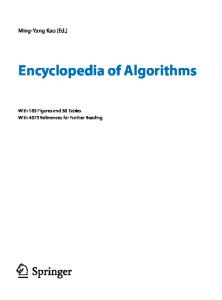Donor-Acceptor Pairs in Silicon
- PDF / 716,667 Bytes
- 12 Pages / 420.48 x 639 pts Page_size
- 84 Downloads / 325 Views
DONOR-ACCEPTOR PAIRS IN SILICON H.E. ALTINK, T. GREGORKIEWICZ AND C.A.J. AMMERLAAN Van der Waals-Zeeman Laboratorium, Universiteit van Amsterdam, Valckenierstraat 65-67, NL-1018 XE Amsterdam, The Netherlands
ABSTRACT Stable forms of donor-acceptor pairs in silicon arise from the interaction between negatively charged acceptors and 3d transition element donors, which, occupying interstitial sites, have high mobilities. The atomic and electronic structure of these pairs can be studied in detail by magnetic resonance. The symmetry of centers as observed in the resonance experiments gives strict constraints on the applicable atomic models. The spin of centers is related to their charge state. Hyperfine interactions frequently lead to a specific structure in the spectra, which characterizes the chemical identity of atomic components of the pair. Deep level transient spectroscopy provides a way of sensitive observation of electrically active impurities: to determine their concentrations and associated electronic levels. It allows the study of the kinetics of the pair formation process and thermally induced dissociation; binding energies can be determined. Transformation of pairs as a result of illumination was also observed. Several of the pairs can exist in geometrically different atomic configurations leading to the phenomenon of bi- or multi-stability. In the paper the donor-acceptor pair formation process is illustrated by examples involving the substitutional double acceptor zinc, for which new data became recently available. INTRODUCTION Donor-acceptor pairs are a familiar and important form of small impurity complexes in semiconductors. Binding of impurities in the pair is easily understood on the basis of electrostatic attraction between a positive ionized donor and a negative ionized acceptor. If at least one of the impurities has high mobility through the semiconductor crystal, as is commonly the case for impurities on interstitial sites, such pairs are readily formed. The process of pair formation can take place as a result of thermal processing at elevated temperatures but even, more slowly, at ambient temperatures. A detailed description of the pairing phenomenon is already given in an early paper on the interactions among doping defects in silicon [1]. In the more common form of pair formation between singly ionized dopants, such as Bs and Fe.+, the binding energies of about 0.65 eV are not very large and pairs are not very stable [2]. When both impurities are doubly ionized binding energies are four times higher. In this case effective impurity gettering can be based on the pair formation process. Pairs sometimes can exist in several different site configurations leading to structural multistability. This paper will focus on the involvement of zinc together with 3d transition metals in the pairing process in silicon. Recently new results were obtained allowing the description of atomic and electronic structure of such pairs. Zinc diffuses through silicon by a substitutional-interstitial exchange mechanism
Data Loading...




